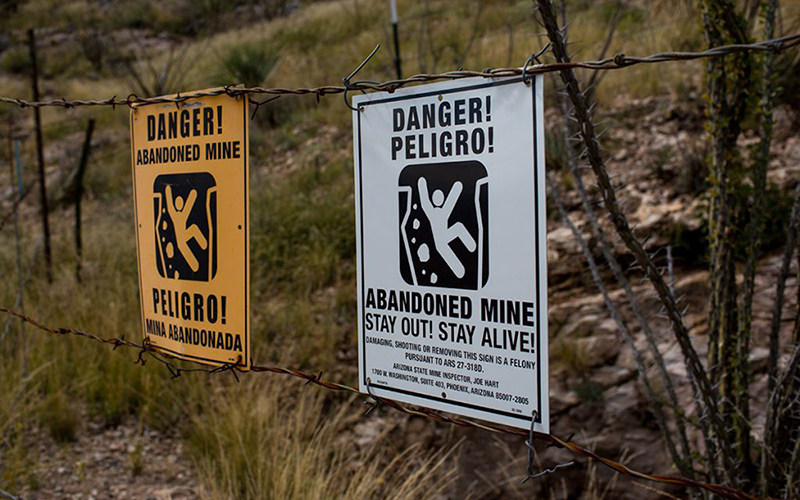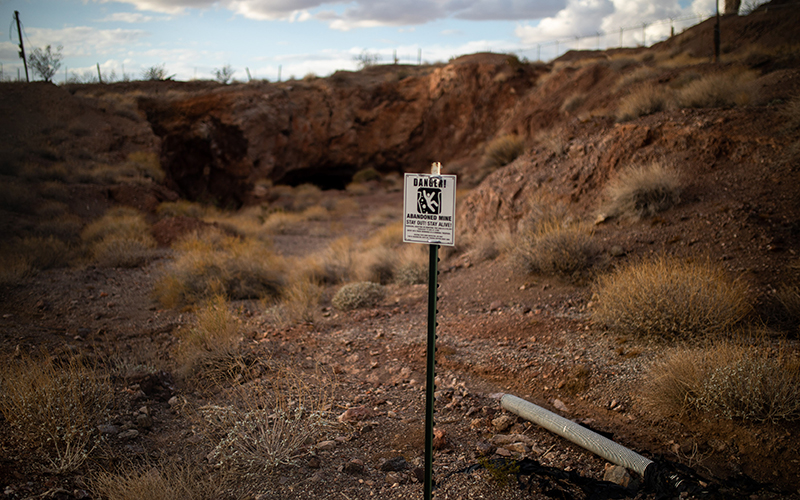WASHINGTON – The Environmental Protection Agency announced plans Wednesday for a new office that will focus on tracking and cleaning up abandoned mines in Western states, a particular problem in Arizona with uranium and other mines.
The unveiling of the Office of Mountains, Deserts and Plains was welcomed by officials from the states where it will be operating. That included Arizona Department of Environmental Quality Director Misael Cabrera. He said during Wednesday’s announcement that he looks forward to “innovative yet practical solutions that respect local concerns.”
“I commend EPA for establishing a Western lands-focused office that will address the complex problems associated with hardrock mine cleanups,” Cabrera said of the office that will be based in Lakewood, Colorado.
The office will have jurisdiction over mining and environmental issues unique to states west of the Mississippi River, according to the EPA, which said it placed the office out West to be more focused on issues there and to combat environmental issues more directly and efficiently.
“It’s going to, I think, make the (cleanup) work better and … more accessible to communities that have these issues,” said Doug Benevento, EPA’s acting associate deputy administrator, said at the press conference to announce the office.
Environmental and tribal officials welcomed Wednesday’s announcement – but noted that it comes from an administration that they said has pushed for more uranium mining and opened the door elsewhere to problematic mining operations.
“The Navajo Nation opposes any hard rock mining on or near the Navajo Nation,” said Oliver Whaley, director of the Navajo Nation Environmental Protection Agency. “Obviously that’s something that hasn’t been the case with this (Trump) administration.”
But Whaley welcomed any move to clean up any of the many abandoned uranium mines on the Navajo Nation, an environmental hazard the tribe has raised for years.
“The abandoned uranium mines on the Navajo Nation need to be addressed at a lot faster rate than they currently are,” Whaley said.
Mineral-rich Western states like Arizona, Colorado and Idaho have long benefited from hard-rock mining, including uranium mining, but those benefits have come at an environmental cost. Those include acid mine drainage and erosion that can lead to contamination of surface and groundwater and can damage surrounding habitats, among other problems.
Benevento said one of the main objectives of the EPA’s new office is to track the progress of cleaning the abandoned mines.
“Some of these (abandoned mine) sites have been on the list for 30 years,” he said. “That’s a long time to clean up sites, and communities want it done faster and this office will have it done faster.”
Benevento said the EPA’s Superfund program – a 1980s law aimed at cleaning up toxic abandoned industrial sites by forcing responsible parties to either do the cleanup or reimburse the government for it – was initially designed for smaller, compact sites in Eastern states.
“What this office will do is it will bring a focus on how to address those larger (Western) sites,” Benevento said, citing the 63 Superfund mining sites across Western states today.
An official with the Center for Biological Diversity echoed Whaley, saying that while the changes are welcome, they are long overdue and that the Trump administration has not helped so far.
President Donald Trump is “about to give mining companies even more of an upper hand, to create more toxic pollution and taxpayers will be stuck with the bill,” said Randi Spivak, the center’s public lands program director. “It’s very good to see the EPA plan to address a long-overdue cleanup of hard-rock mining Superfund sites.”


